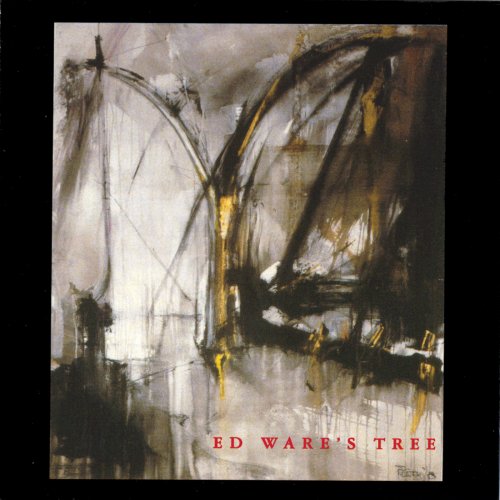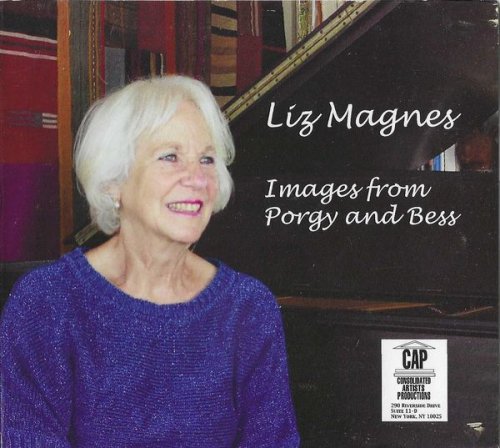ARC Ensemble - Chamber Works by Ernest Kanitz (2025) [Hi-Res]

Artist: ARC Ensemble
Title: Chamber Works by Ernest Kanitz
Year Of Release: 2025
Label: Chandos
Genre: Classical
Quality: FLAC (tracks) / 24bit-96kHz FLAC (tracks+booklet)
Total Time: 01:13:42
Total Size: 283 MB / 1.31 GB
WebSite: Album Preview
Tracklist:Title: Chamber Works by Ernest Kanitz
Year Of Release: 2025
Label: Chandos
Genre: Classical
Quality: FLAC (tracks) / 24bit-96kHz FLAC (tracks+booklet)
Total Time: 01:13:42
Total Size: 283 MB / 1.31 GB
WebSite: Album Preview
1. Kanitz: Sonata for Violin and Piano, Op. 10: I. Lento non troppo (7:45)
2. Kanitz: Sonata for Violin and Piano, Op. 10: II. Adagio (8:59)
3. Kanitz: Sonata for Violin and Piano, Op. 10: III. Epilogo (5:12)
4. Kanitz: String Quartet: I. Elegy (4:06)
5. Kanitz: String Quartet: II. Rondino (2:34)
6. Kanitz: String Quartet: III. Old Viennese Tune and Variations (4:36)
7. Kanitz: String Quartet: IV. Finale (7:02)
8. Kanitz: Sonata for Solo Cello: I. Allegro deciso (3:38)
9. Kanitz: Sonata for Solo Cello: II. Poco adagio (3:41)
10. Kanitz: Sonata for Solo Cello: III. Quasi presto e molto leggiero (2:53)
11. Kanitz: Concertino: I. Ouverture (4:48)
12. Kanitz: Concertino: II. Air (4:13)
13. Kanitz: Concertino: III. Fugue (3:12)
14. Kanitz: Sonata Californiana: I. Sky and Water (2:57)
15. Kanitz: Sonata Californiana: II. Lament (3:50)
16. Kanitz: Sonata Californiana: III. Hollywood (4:26)
The ARC Ensemble’s Music in Exile series continues with this exploration of chamber works by Ernest Kanitz.
Born into a wealthy Viennese family in 1894, he was encouraged in music by his mother, started piano lessons aged seven, and was composing within a year. Persuaded by his parents to study for a degree in Law, Kanitz also studied piano, music theory, and composition (with Franz Schreker, who also served as a mentor). His reputation grew steadily, his works promoted by conductors such as George Szell and Clemens Krauss. In 1922 he gained a position as a teacher at the New Vienna Conservatory, and in 1930 established the Vienna Women’s Chamber Choir, which quickly gained a reputation across Europe for its performances of Kodály, Honegger, and Stravinsky (as well as Kanitz!). Although he had converted to Christianity in 1914, his Jewish ancestry necessitated emigration from Austria in 1938, following the annexation of Austria by National Socialist Germany. After a short spell in New York, Kanitz and his wife, Gertrude, moved to Rock Hill, South Carolina, where he had secured a teaching position. Following Gertrude’s early death from cancer, Kanitz moved to California, where he established a successful teaching career at the University of Southern California.
Retirement from USC in 1960 gave him much more time for composition (although he was still teaching and lecturing), with successful premières given by the Philadelphia Orchestra, Los Angeles Philharmonic, and San Francisco Symphony, among many others. Following his death in 1978, his music, like that of so many émigré composers, has been forgotten.
Born into a wealthy Viennese family in 1894, he was encouraged in music by his mother, started piano lessons aged seven, and was composing within a year. Persuaded by his parents to study for a degree in Law, Kanitz also studied piano, music theory, and composition (with Franz Schreker, who also served as a mentor). His reputation grew steadily, his works promoted by conductors such as George Szell and Clemens Krauss. In 1922 he gained a position as a teacher at the New Vienna Conservatory, and in 1930 established the Vienna Women’s Chamber Choir, which quickly gained a reputation across Europe for its performances of Kodály, Honegger, and Stravinsky (as well as Kanitz!). Although he had converted to Christianity in 1914, his Jewish ancestry necessitated emigration from Austria in 1938, following the annexation of Austria by National Socialist Germany. After a short spell in New York, Kanitz and his wife, Gertrude, moved to Rock Hill, South Carolina, where he had secured a teaching position. Following Gertrude’s early death from cancer, Kanitz moved to California, where he established a successful teaching career at the University of Southern California.
Retirement from USC in 1960 gave him much more time for composition (although he was still teaching and lecturing), with successful premières given by the Philadelphia Orchestra, Los Angeles Philharmonic, and San Francisco Symphony, among many others. Following his death in 1978, his music, like that of so many émigré composers, has been forgotten.

![John Abercrombie, Dave Holland & Jack DeJohnette - Gateway (1975/2025) [Hi-Res] John Abercrombie, Dave Holland & Jack DeJohnette - Gateway (1975/2025) [Hi-Res]](https://www.dibpic.com/uploads/posts/2025-12/1765471735_cover.jpg)
![Collin Walcott - Cloud Dance (1976/2025) [Hi-Res] Collin Walcott - Cloud Dance (1976/2025) [Hi-Res]](https://www.dibpic.com/uploads/posts/2025-12/1765538423_cover.jpg)
![Martin Diaz - El Goce (2025) [Hi-Res] Martin Diaz - El Goce (2025) [Hi-Res]](https://www.dibpic.com/uploads/posts/2025-12/1765508962_qnqc8iqcv0c0b_600.jpg)
![Tomasz Stańko - Unit (Polish Radio Sessions vol. 2/6) (2025) [Hi-Res] Tomasz Stańko - Unit (Polish Radio Sessions vol. 2/6) (2025) [Hi-Res]](https://www.dibpic.com/uploads/posts/2025-12/1765790300_cover.jpg)



